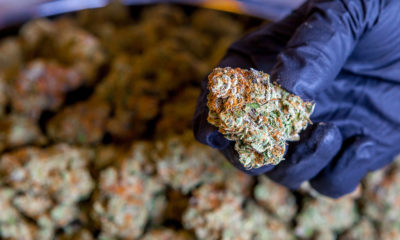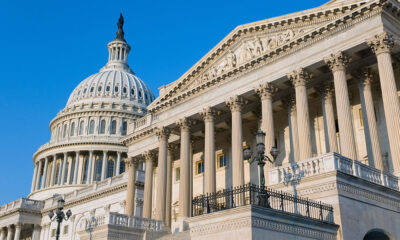
Politics
The State of Marijuana After Election Day
Celebrate marijuana’s big wins on Election Day.
Marijuana scored historic victories this Election Day. If 2012 broke the seal on recreational legalization, 2016 may have pushed it past the point of no return. In fact, the coming years may tell us if we are in the final throes of cannabis criminalization in the U.S. More on that in a bit, but first let’s go state by state.
Adult-Use
California
With the passage of Prop 64, legalization scored an enormous victory. Possession of up to an ounce (or 8 grams of concentrate), cultivation and personal use are now legal for adults 21 and over. Use is prohibited anywhere that cigarettes or alcohol are, such as in public or near schools. Retail sales will begin Jan. 1 2018.
The sheer size of the California economy — sixth largest in the world by GDP — creates tremendous momentum for the legalization effort. While no one should expect much progress nationally for the foreseeable future, California’s presence as a legalized state makes reversing the tide quite difficult.
Massachusetts
Legalization has come to the East Coast. On Dec. 15, 2016 cannabis will be legal in Massachusetts, thanks to the successful passage of Question 4. The bill allows for possession of up to 10 ounces at home and 1 ounce in public, as well as use, cultivation, and sales, which are regulated by a new board.
Maine
Legalization in Maine squeaked out a narrow victory, with the final tally giving the “yes” side a victory by less than 3,000 votes, out of over 750,000 cast. Because the vote was so close, opponents may ask for a recount, and it is quite possible they will do so. Unlike most other legalization laws, Maine regulates cannabis as an agricultural product. That said, it follows the same basic pattern as other laws: sale, possession and use in private or in licensed businesses is legal. People may possess up to six plants and purchase up to 2.5 ounces.
With two New England states in the fold (pending a recount), it seems inevitable that Vermont will eventually become the first state to pass recreational legalization through the legislature. This is an idea that Vermont has been inching toward for multiple years, and with two neighbors jumping in, this seems like an obvious time for the Green Mountain State to follow suit.
Nevada
Lastly, Nevada joined neighbors California and Oregon in legalizing cannabis. Only licensed medical dispensaries will be eligible for retail licenses for 18 months, and the number of licenses is restricted on a county by county basis. The rest of the details are largely familiar: possession of up to an ounce is legal and cultivation are legal, with restrictions on where people can use cannabis.
Arizona
The one loss at the ballot box, Arizona narrowly failed to pass a legalization bill similar to the others. With the initiative taking 48 percent of the vote and the entire West Coast and Nevada fully legal, it likely won’t be long before activists take another shot at advancing full legalization.
Medical Marijuana
Medical marijuana went four for four at the ballot box. Florida, Arkansas and North Dakota all became medical states, while Montana improved its program, which had been severely hampered by previous regulations. Each state now allows marijuana to be recommended for a host of severe conditions — these are far better than the excessively restrictive CBD laws that swept through many southern states in recent years. For that reason, each of the three new medical states represents a breakthrough in the legalization movement for expanding comprehensive medical cannabis legalization to new territory — namely the South.
A few quirks of each law: North Dakota’s only allows for cultivation if the patient is more than 40 miles from a dispensary. Arkansas allows individual municipalities to ban medical marijuana (AKA local control) and Florida enjoyed a resounding victory, with 71 percent of voters saying “yes” to medical marijuana.
Montana was already a medical state, but in 2011, the state legislature passed a bill restricting providers to three patients and allowing the state to investigate any physician who recommended more than 25 cannabis patients in a year. With this year’s success at the ballot box, those provisions are stripped away and PTSD and chronic pain have been added to the list of conditions physicians may prescribe marijuana for.
The Trump Administration
Nov. 8 was a huge win for cannabis in every part of the country, but there is one wild card: the incoming Trump Administration. With legalization as popular as it’s ever been, medical cannabis legal in over half the 50 states, and a growing number of states with marijuana treated essentially like alcohol, it is unlikely that the Trump Administration will treat cannabis with hostility. This is one reason legalization in California is so critical: if the new attorney general wants to enforce criminalization, they won’t just have a handful of small to medium size states to deal with, they will have to take on the biggest, most powerful state in the union. Once sales begin in California, returning to criminalization will be almost like trying to criminalize wine in France. If the legalization movement can survive a conservative administration while continuing to progress at the state level, it will be the surest sign yet that sensible cannabis policy has won.
TELL US, will you see changes in marijuana in your home state?























